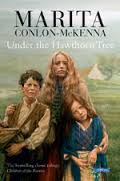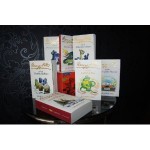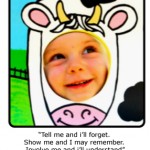 Under the Hawthorn Tree by Marita Conlon-McKenna is a historical novel for children – set at the time of the Great Potato Famine. ?It’s been sitting on our bookshelves for ages but neither of the children had been compelled to read it (Famous Five, Harry Potter, Hardy Boys – all seemed more exciting!) and I hadn’t got around to reading it to them. The children are reading it in school at the moment and I like to read the novel they are doing. Last year they read ‘Holes’, I hadn’t come across it before and I loved it.
Under the Hawthorn Tree by Marita Conlon-McKenna is a historical novel for children – set at the time of the Great Potato Famine. ?It’s been sitting on our bookshelves for ages but neither of the children had been compelled to read it (Famous Five, Harry Potter, Hardy Boys – all seemed more exciting!) and I hadn’t got around to reading it to them. The children are reading it in school at the moment and I like to read the novel they are doing. Last year they read ‘Holes’, I hadn’t come across it before and I loved it.
I can see why this book has been so popular, it is a lovely way to make history come alive for children, reading about other kids their age and how they manage to survive by going on a long journey to find their only known relatives. ?The potato blight has struck and millions are without their primary (and only) source of food. Their father had gone to work on the roads and their mother had gone in search for food – they hadn’t returned and the readers can only conclude that they are dead. Their baby sister had died and as the parish priest is sick, they have to bury her under the hawthorn tree. ?This shows the breakdown of society – normal practices are not possible in the face of death and disease. The stories their mother tells them of her birthday cakes and festivities shows a past that contrasts hugely with the childhoods of her own children. The 1820s are seen to be an affluent and happy time in comparison to 1845. For Eily (12), Michael (9) and Peggy (6), their only other options are the workhouse and they know the chances of surviving there are slim. ?Travelling cross country, avoiding the roads if possible so they can prevent meeting people with the famine fever, they survive on food provided by a neighbour, cooking fish, berries and other scraps along the way as they journey to find their great aunts.
There is plenty of historical detail to discuss. Michael witnesses trailer loads of grain being transported to the coast under armed guard to be exported to England as desperate people try to break the guard to get some grain. Space in the workhouse might be available later in the day when others die but there is no food available for the hordes waiting outside. People dying in their cabins, preferring to die in peace than in a crowded workhouse. ?Neighbours not visiting anymore for fear of getting the fever and embarrassment from not having food. The long desperate queues for the soup kitchens. People’s bodies held together by rags. ?The imagery communicates the tragedy and seriousness of the situation yet in a way that isn’t too distressing for children.
A great little book for children aged 9+. Adults will enjoy it too for a quick read.











